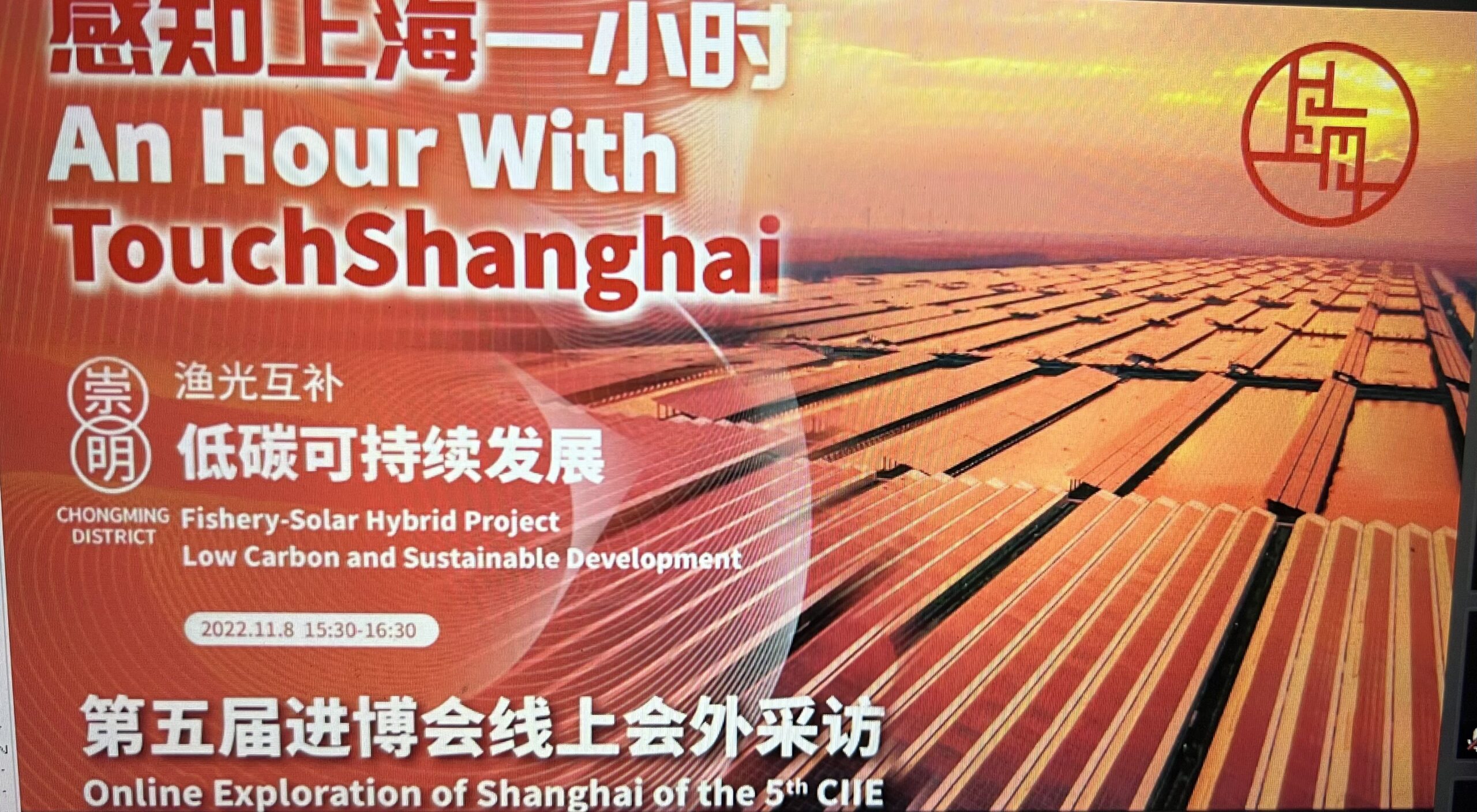Pakistan is blessed with plenty of natural resources and is also called the land of streams and rivers which can be used for clean & green energy by adopting the Chinese Fishery-Solar Hybrid model.
The fifth China International Import Expo (CIIE) in Shanghai started an online exploration of Shanghai which helped foreigners and Chinese sightsee different innovations in diverse fields. Keeping this in view Fishery-Solar HybridProject in Chongming District is an ideal model for low-carbon and sustainable development.
Experts believe solar energy is the most attractive alternative energy solution for the general public in Pakistan, and people have started to install solar panels on the roofs of their houses, stores, and industrial units, which has a very broad application prospect. They added that the Fishery-Solar Hybrid concept is an ideal energy solution for Pakistan.
Zhu Zhenhua, leader of the “Baodao Village” Aquafarm-PV Power Generation Hybrid Project told the audience that this is a very unique concept, and the entire aquafarm plus PV power generation hybrid project will serve multiple purposes that include education, tourism, ecological farming, and aquafarming.
“After using the automatic feeding machine for aqua farming, we saved about 50% of manpower which is around 30 to 40 people and the other benefit of the automatic machine is that it has extremely high precision, which is more effective than feeding fish manually,” he added.
A Pakistani journalist asked a question that Pakistan is a developing country and usually these technologies are very expensive, how do you maintain the price so that underdeveloped countries can also afford this technology?
Answering the question, he said that with countries’ eager to get rid of their dependence on traditional energy sources, the gradual reduction of power generation costs, and the growing maturity of technology, investors’ recognition of photovoltaic station assets are gradually rising; moreover, photovoltaic projects have the advantages of low asset risk, stable cash flow, and strong financing ability, thus the overseas photovoltaic market has a bright future.
“As we all know, traditional sources of energy are getting more and more limited, which shows us the necessity of developing newer and greener energy. Actually, the new technologies are not that expensive, and currently the cost of the PV generated power is only RMB 3 per watt,” he stated.
He further said that as both fish and power can be harvested with an eco-friendly approach, the project is not only the largest in Shanghai but also stands as an important practice to reach peak carbon emission and carbon neutrality.
“We can visually display the power generation and operation status of the power station, compare the core data indicators of each power station in multiple dimensions, and grasp the overall operation level of the constructed power station in real-time through comprehensive statistical analysis,” he mentioned.
Ding Zhenxing, Deputy Director of Chongming District Development and Reform Commission said that they are developing very fast towards further adoption of clean energy in addition to PV and wind power, and they also have biomass where they make use of chicken and others.
“The output of clean energy in Chongming District is 570,000 kilowatts, which equals to 30% of the total electricity consumption, and that is number one in Shanghai while the target is to reach 35%,” he remarked.
Experts further said that photovoltaic as a natural green clean energy industry is constantly developing, and photovoltaic applications are gradually deepening into every aspect of people’s lives.
“Although different countries/regions have very limited sunlight hours due to the sunshine angle, we can consider a variety of project development models to solve the problem of photovoltaic power generation, for example, from household photovoltaic to industrial and commercial distributed, from the installation of photovoltaic power plants on the roof to the vacant land,” an expert said.
They added that safety is the lifeblood of a photovoltaic power station and the foundation for achieving a return on investment. Whether for in-ground, mountain, roof, and other solar power plant scenarios, safety is almost a principal issue based on the “one-vote veto rule”.
It is to be noted that covering a land of nearly 1,376 hectares, the 110 MW fishery-solar hybrid project in Yuan Farm of Chongming District is the largest monolithic centralized PV power generation project in Shanghai so far. By utilizing the existing fish ponds, the project makes PV power generation possible above the water while fish can be raised as usual in the water.
















